Planning an Alleppey itinerary that you want to remember for years to come?
Then, you’re in luck, as this small city (often dubbed ‘the Venice of the east’) is sandwiched between the Arabanian sea a huge system of salt and freshwater backwaters with rivers, canals and lagoons.
There’s no way that I’d easily forget my Alleppey trip. It’s just so scenic, with incredible beach sunsets, tasty seafood and backwaters lined with houseboats and bushy water hyacinths.
Alappuzha (or Alleppey, as most people know it) is best known for its houseboat and backwater cruises. Many of the best places to visit in Alleppey centre around its scenic backwaters, where there is a huge variety of wildlife.
Better yet, Alleppey is incredibly easy to get to, being just an hour and a half’s drive from Kochi – I took an Uber there!
So let’s get stuck into exactly how to plan your Alleppey itinerary, including logistics such as how to get there, the best activities and how to book houseboat cruises.
While you’re here, feel free to open up a new tab to plan the rest of your Kerala itinerary. I’ve also written a detailed Munnar itinerary and a guide on what to wear in Kerala season by season.
Disclosure: This post includes affiliate links. If you decide to click through and make a qualifying purchase, I will receive a small commission at no extra cost to you – thanks for your support.
QUICK INFORMATION
Best time to visit: September to March
How to get there: Uber or train from Kochi
Must-do experiences in Alleppey
1. Houseboat cruise (overnight from Kochi) 🌊
2. Not taking a houseboat? Try a Shikara backwater cruise instead.
Where is Alleppey?
Alappuzha (Alleppey) is a city in central Kerala, India’s southermost state.
It is an hour and a half’s drive south of Kochi (Cochin), where there is an international airport.
So, if you haven’t already, you need to fly to Cochin International Airport; I recommend that you check for flight deals several months in advance on Skyscanner.
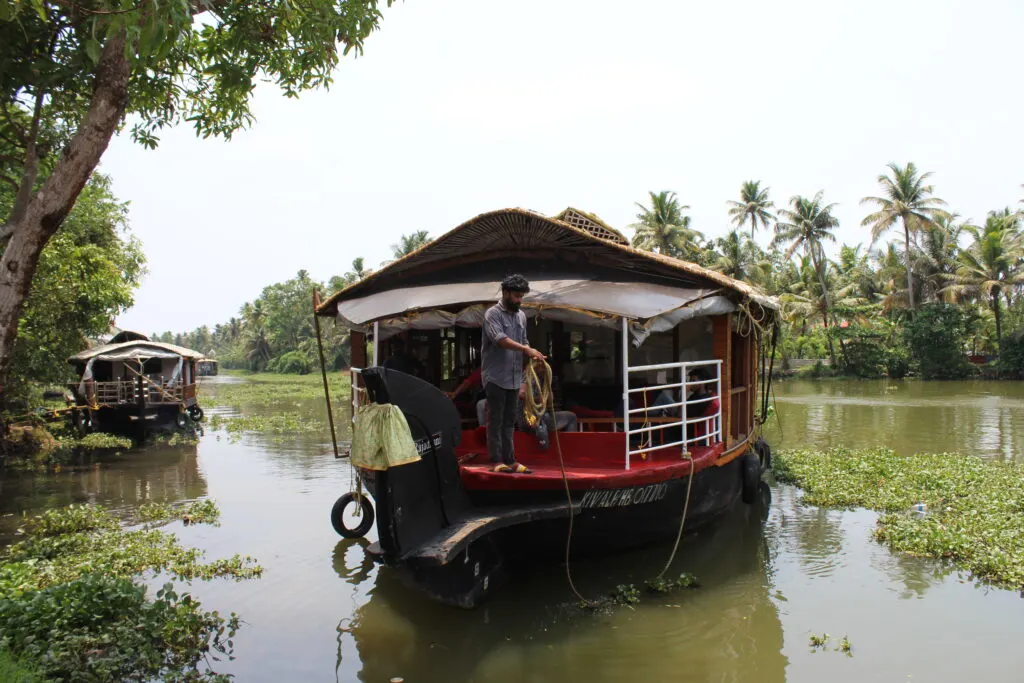
It’s very easy to reach from Kochi. I hailed an Uber directly from Kochi to Alleppey, then arranged for the driver to take me back later the same day.
If you don’t want to rely on an Uber, there are private transfers from Kochi to Alleppey available on 12Go.
Alternatively, you can take the train or bus to Alleppey for under £10 each way. Again, tickets can be reserved directly on 12Go – this widget will help you to check the availability:
The train takes an hour and a half, while bus takes one hour (from Nettoor in Kochi).
Other popular destinations near Alleppey include Marari (25 minutes’ drive away), a traditional fishing village, and Kumarkaom, a lakeside destination dotted with luxury backwater resorts (50 minutes’ drive).
What is Alleppey Famous For?
Alleppey’s backwaters have earned the district a reputation as ‘the Venice of the East’.
The main reason most people visit Alleppey is to stay on a houseboat overnight.
The houseboats in Kerala are based upon the Kettuvallam, a traditional boat used to transport rice and spices across Kerala.
Staying on a houseboat gives you the chance to see Kerala’s backwaters, which have a very unique ecosystem.
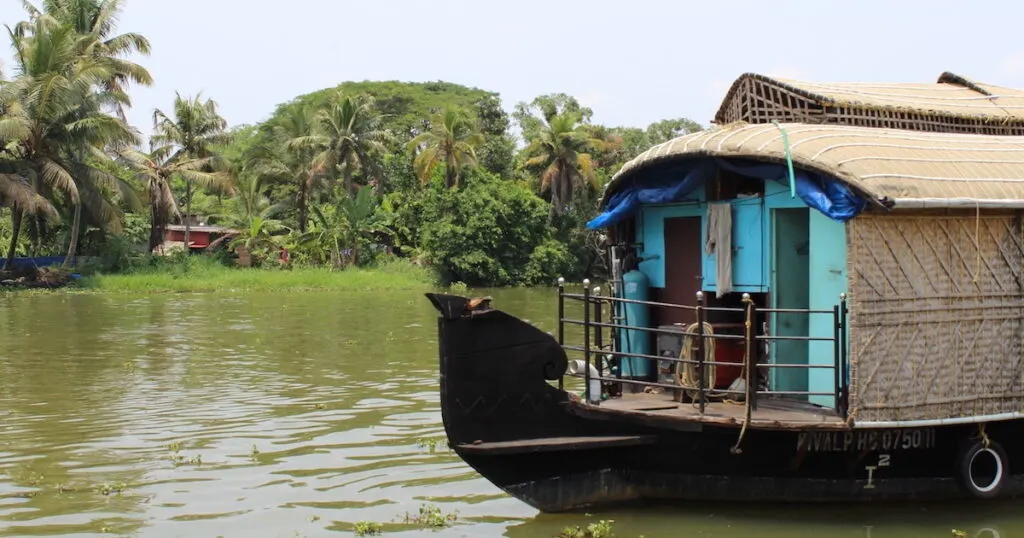
Houseboats in Alleppey
As they contain a mixture of saltwater and freshwater, they attract a wide variety of wildlife, such as kingfishers, monitor lizards, vipers, otters, dolphins and egrets.
If you don’t stay on a houseboat, a popular alternative is a Shikara backwater cruise.
Shikara boats are smaller wooden boats traditionally used for fishing and transporting smaller goods.

Shikara boat approaching in Alleppey
Alleppey is also famous for the annual Nehru Trophy Boat race on Punnamda Lake (usually held in August or September).
This snake boat race features 100-foot-long snake boats racing to traditional boat songs.
Alleppey has a thriving coir weaving industry, due to the heaps of coconut trees in the area (coir is a robust fibre extracted from the coconut husk).
Similarly, it’s known for toddy-tapping, which involves producing a weak spirit from palm tree sap.
To summarise, Alleppey is famous for:
- Its backwaters, including canals and lagoons.
- Houseboat cruises and shikara boat rides.
- Outdoor activities and watersports.
- Annual snake boat races.
- Coir weaving, fishing, toddy tapping, and farming.
Is Alleppey Worth Visiting?
If you’re keen to experience Kerala’s backwaters, Alleppey is absolutely worth visiting.

There are backwaters in central, south and north Kerala. However, Alleppey is widely considered as the best of the bunch.
It also offers variety. It’s a short drive away from Kumarakom, known as one of the best birdwatching destinations in Kerala.
Marari, a traditional fishing village, is also nearby. Marari and Alleppey both have sandy beaches with incredible sunsets.
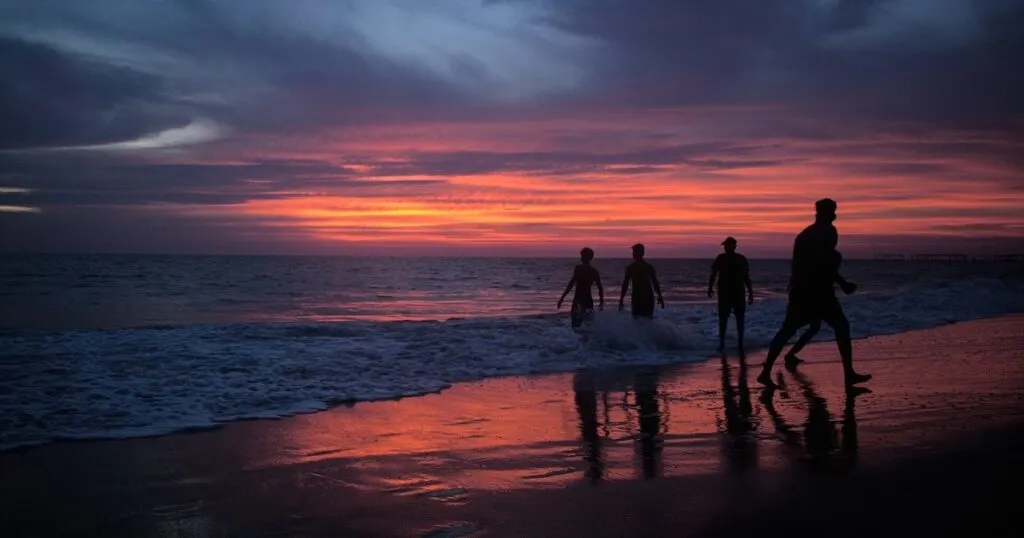
What I loved the most about Alleppey is its slow pace. I visited one of the smaller villages in Alleppey, where there were peaceful backwaters, farms and small community temples.
Where to Stay in Alleppey
Staying on a houseboat is one of the most popular activities in Alleppey, so it’s handy that it doubles up as your accommodation for the night.
Most houseboat cruises last one night and two days. The Why Not Houseboat is a popular luxury houseboat cruise.
However, if you’re on a budget, then you can check the availability for Thara’s Houseboat instead.
If you are not taking a houseboat cruise, there are a few good choices for where to stay in Alleppey:
- Alleppey: The main part of Alleppey has good access to the beaches and backwaters. It also has a wide choice of accommodation, including hostels and luxury hotels.
- Marari: I stayed in Marari, a nearby fishing village. This has a good selection of beachfront resorts and hotels, so you get the benefit of staying near the beach while aways being a short drive away from backwaters.
- Kumarakom: Kumarakom (50 minutes’ drive) is famous for its luxury backwater resorts. However, it’s quite far away from Alleppey, so you must be happy with a longer commute.
The Best Things to Do and Places to Visit in Alleppey
1. Take a houseboat cruise
Taking a houseboat cruise is the number-one thing to do on your Alleppey itinerary.
On a houseboat cruise, you get to stay overnight on a remake of the traditional kettuvallam boats that were used to transport spices and rice across the region.
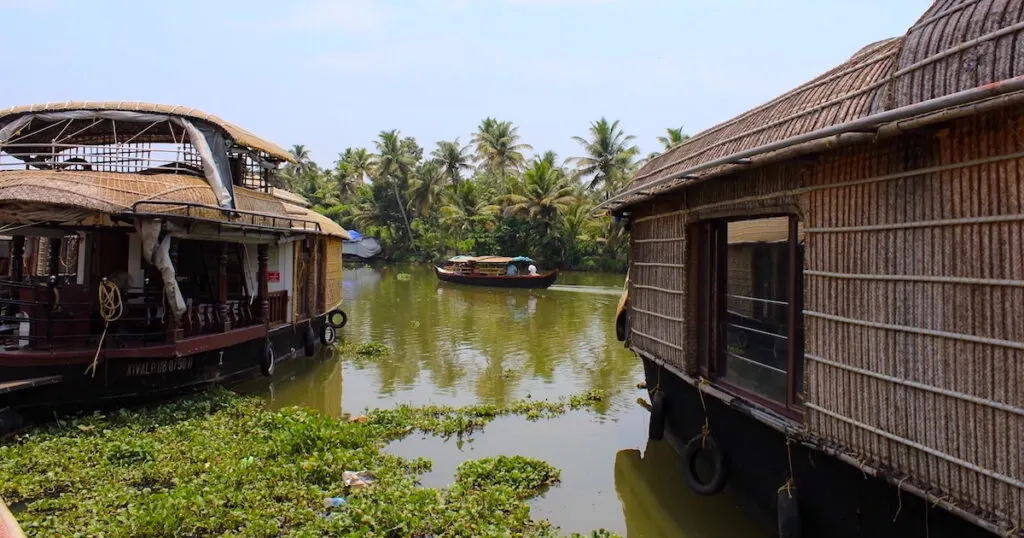
The boats are made from materials such as bamboo, coir, cashew nut resin, and wood from arecanut trees. They have wooden hulls and thatched or bamboo roofs.
There are budget and luxury houseboats. The most luxurious rooms are hotel-esque, with a private balcony and private bathroom.
Almost all of the houseboats feature a kitchen so that traditional Kerala food can be served onboard.
Waking up on the water gives you the best chance at spotting wildlife, especially water birds, as they are most active at dawn and dusk.
How to book a houseboat cruise in Alleppey
To arrange a houseboat cruise, visit the DTPC Houseboat Pre-paid Counter in Alleppey.
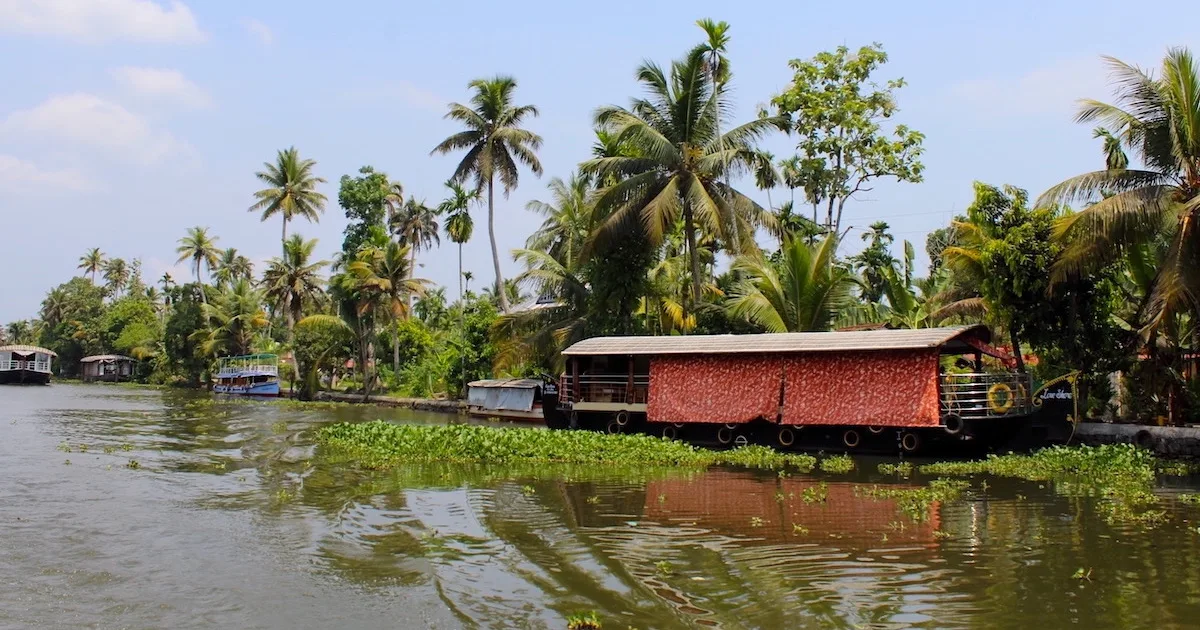
If you are travelling during high season and don’t want to leave availbility to chance, you can book a houseboat cruise online instead.
This overnight houseboat cruise from Kochi includes pick-up and drop-off from Kochi, so you don’t need to arrange your own transport to Alleppey.
Alternatively, you can book to stay on a houseboat directly on Booking.com (such as the Why Not Houseboat or Thara’s Houseboat).
This is the easiest way to ensure you have a comfortable place to stay and a scenic cruise, as you can check the reviews and facilities in advance.
2. Take a Shikara backwater cruise
If you’re not taking a houseboat cruise, the second-best alternative is a backwater cruise on a traditional Shikara boat.

These smaller, wooden boats are still historically significant. They’re used for fishing and transporting smaller amounts of goods.
Shikara boats move faster than houseboats, so they can quickly cover a lot of ground (or rather, water).
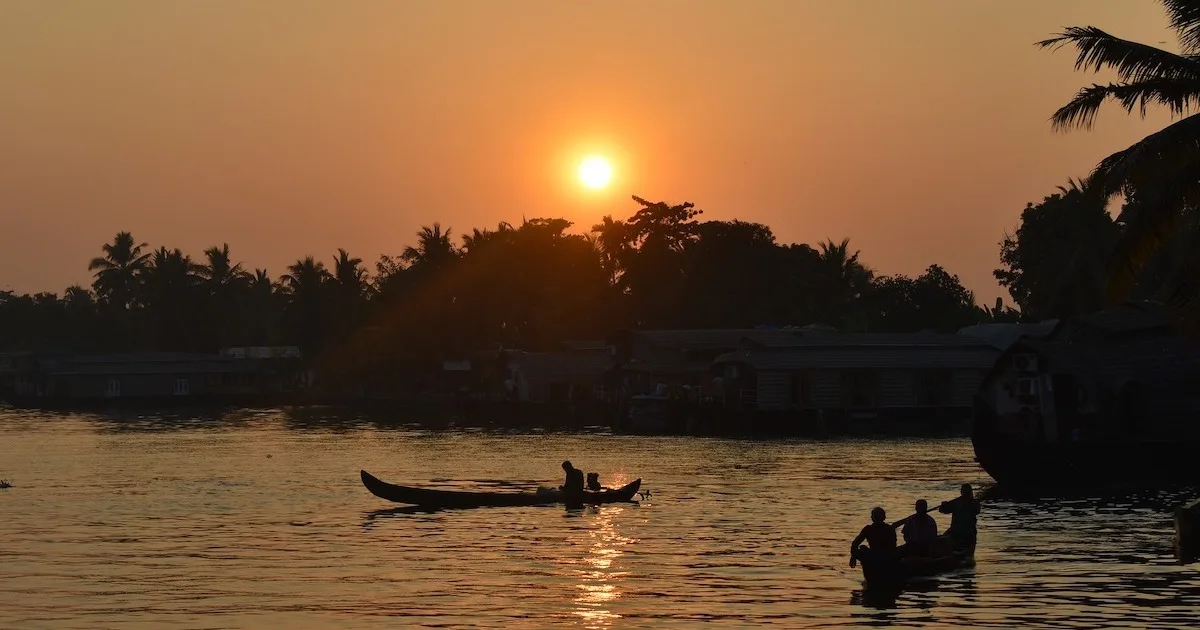
Many of these cruises depart for sunset or sunrise, which is a good time for wildlife watching.
3. Learn about the local coir weaving industry
One of the main industries in Alleppey is coir weaving.
Coir, a fibre taken from coconut husks, is used to construct everything from houseboats and rowing boats to mattresses, beds, mats, handlooms, rope and rugs.
The Alleppey region accounts for 61% of coconut production and 85% of coir products in Kerala.
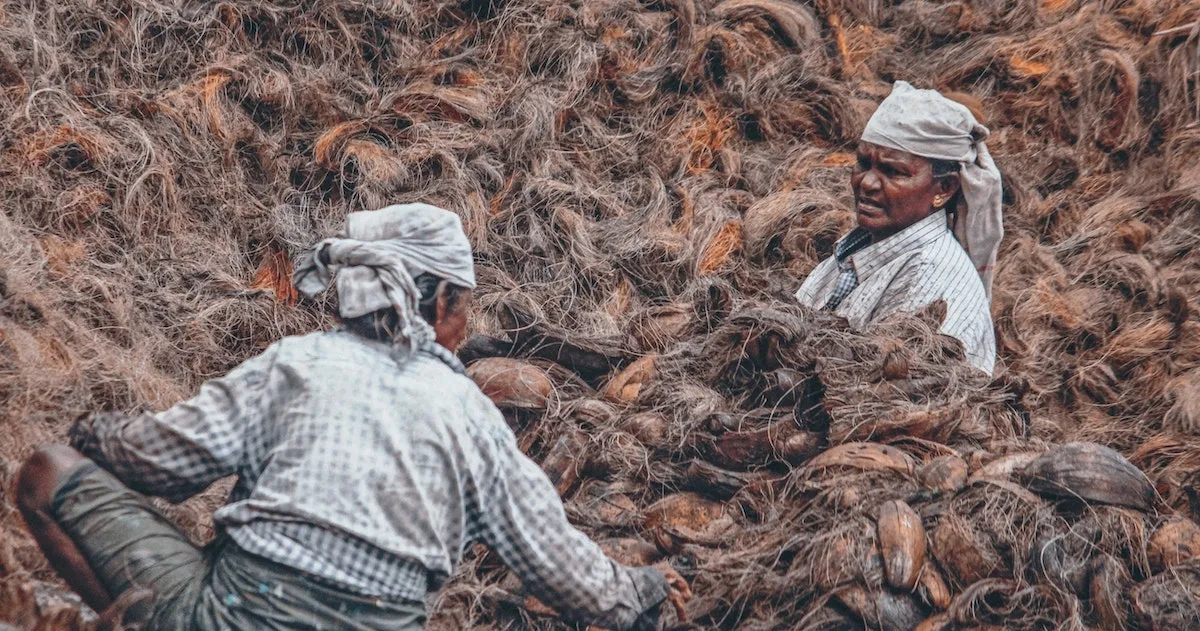
The International Coir Museum shows how coir is extracted and weaved into local products.
You can also arrange a local tour (usually through your hotel), where craftspeople do a demonstration. These tours usually include a visit to a coconut rope factory, where artisans use wheel-driven machines to spin the fibre.
4. Visit the fishing village of Mararikulam
Mararikulam (Marari) is a fishing village 20 minutes’ drive away from Alleppey.
I stayed at Marari Beach Resort (CGH Earth) while exploring Alleppey, a beachfront resort where they serve farm-to-table food.
The resort itself is fascinating and sustainable, as they provide employment to people in the village and construct the villas from local materials.
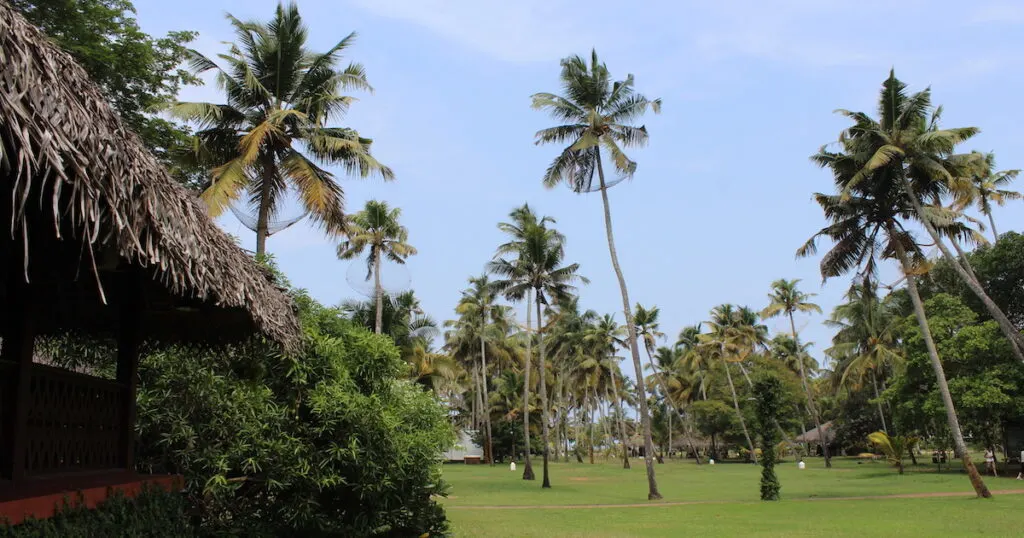
Marari Beach Resort (CGH Earth)
Marari Beach is absolutely worth a spot on your Alleppey itinerary too. It’s a long, sandy beach with palm trees. Fishermen can be seen carrying out their daily activities in Mararikulam.
If you strike up a conversation at the right time of day, you may be able to join one of the fishermen on their trips.
5. Explore Alleppey Beach and Lighthouse
It’s easy to forget that Alleppey is a beach destination too.
Alappuzha beach attracts plenty of locals, who come down to the waters’ edge to watch the waves and the orange orb dip below the horizon.
As such, the beach is a popular picnic spot with a designated picnic area.
Rather than going swimming, they’re likely to take a picnic, bathe or watch the sunset.
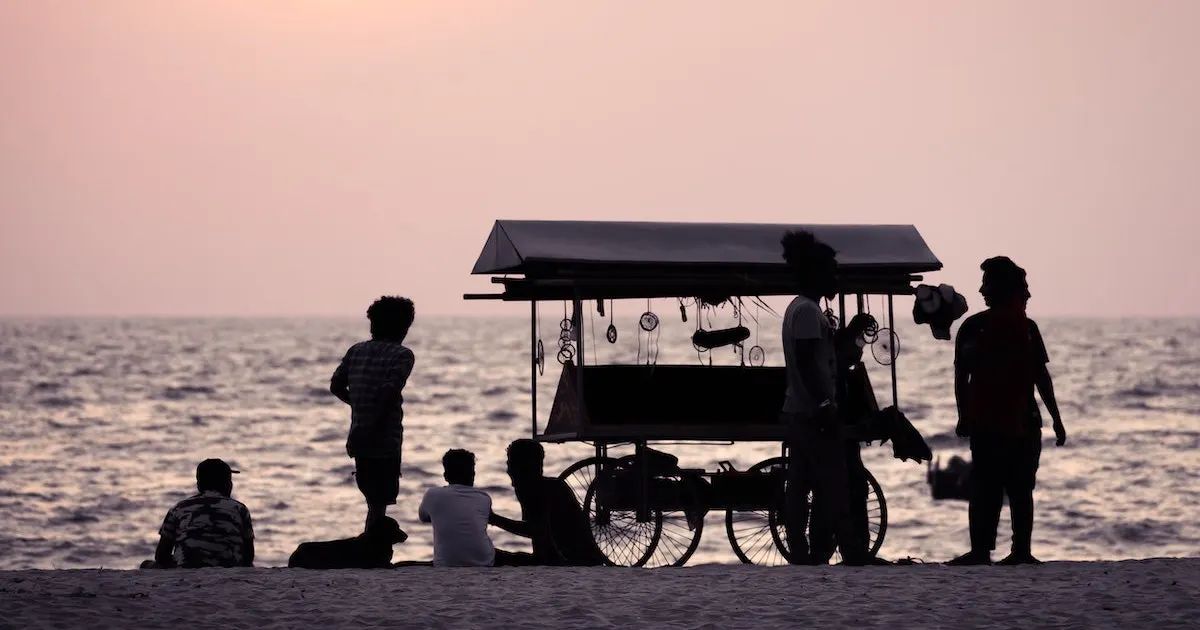
In Alleppey, you can watch the sunset, scrape the jelly out of a coconut sold from the local stalls, and check out the pier, which is over 140 years old.
Between 3pm and 4.30pm, you can pay to climb the lighthouse.
6. Try toddy, the local spirit
Alleppey’s local spirit is toddy, a milky spirit made from palm sap.
Most of Kerala’s toddy shops are based around Kuttanad. However, many bars in Alleppey will also serve toddy if you want to try it elsewhere.
7. Watch the toddy tapping in action
Once you’ve tasted the toddy yourself, you might want to track down a toddy tapping tour to see how the professionals do it.
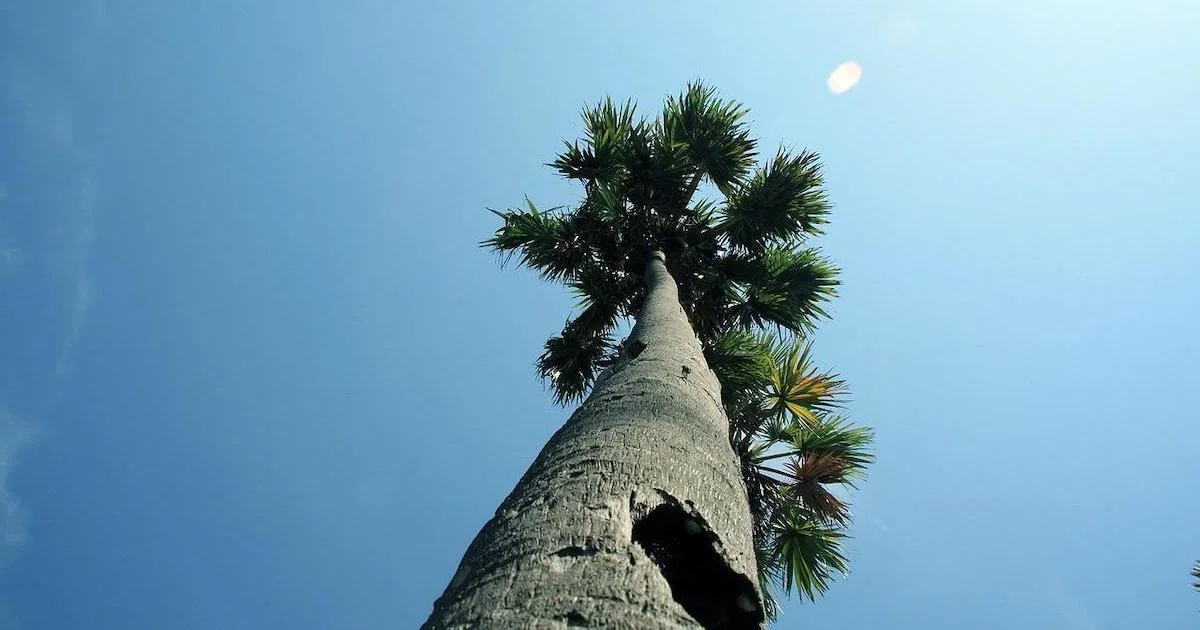
Most toddy tappers are strapped in using a harness, but many workers still scale the palm trees freely.
Toddy tapping trees are easy to find because there will be black bowls strung from tip of the trunk.
Most houseboats or hotels can organise a toddy tapping tour for you.
8. Try karimeen pollichatthu, a delicious local fish dish
If there’s one thing that I miss about Alleppey, it’s their delicious karimeen pollichatthu.
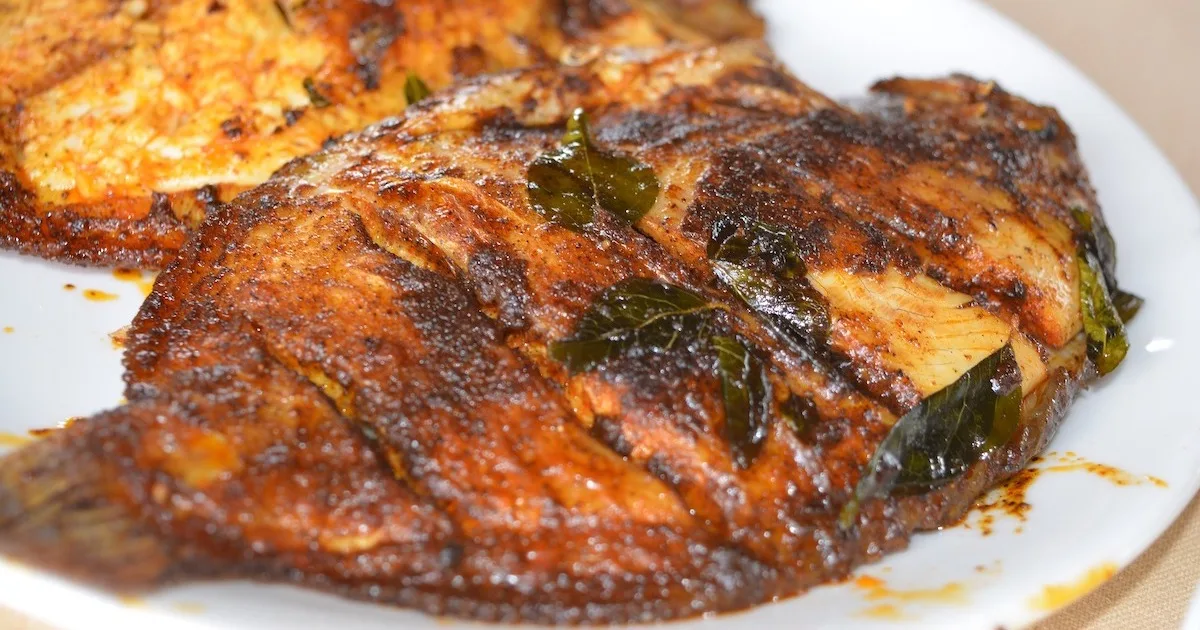
Karimeen is a small, round white fish native to Kerala’s backwaters.
The karimeen is marinated in spices such as curry leaves, ginger, garam masala, turmeric, and garlic before being baked in a banana leaf.
I hope you found this Alleppey itinerary useful! Enjoy your trip, or keep on reading for more tips on exploring Kerala…
Suggested reading:
- Kerala itinerary – start planning your trip here!
- Munnar itinerary – tea treks, hikes and more.
- Alleppey itinerary (including backwater cruise advice)
- Thekkady itinerary + the Periyar Tiger Reserve!
- Kochi itinerary (Cochin guide)
- What to wear in Kerala + a free packing list.
FAQ
Ideally, you should spend at least two days in Alleppey. Most houseboat cruises last for one night and two days. If you want to explore more of Alleppey, such as the beach and lighthouse, plan an extra day or two in the area.
Alleppey is best for backwater and houseboat cruises. Munnar does not have any backwaters. Instead, it’s famous for its tea plantations and outdoor activities. Munnar is best for tea treks, tea factory tours, hiking and wildlife watching.
The best time to visit Alleppey is September to March, as the weather is hot but dry. The best time for birdwatching in Alleppey is between November and April.

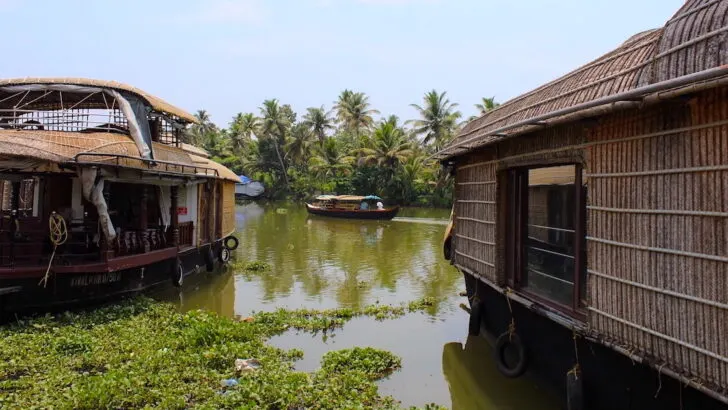



ashik
Friday 27th of December 2024
great